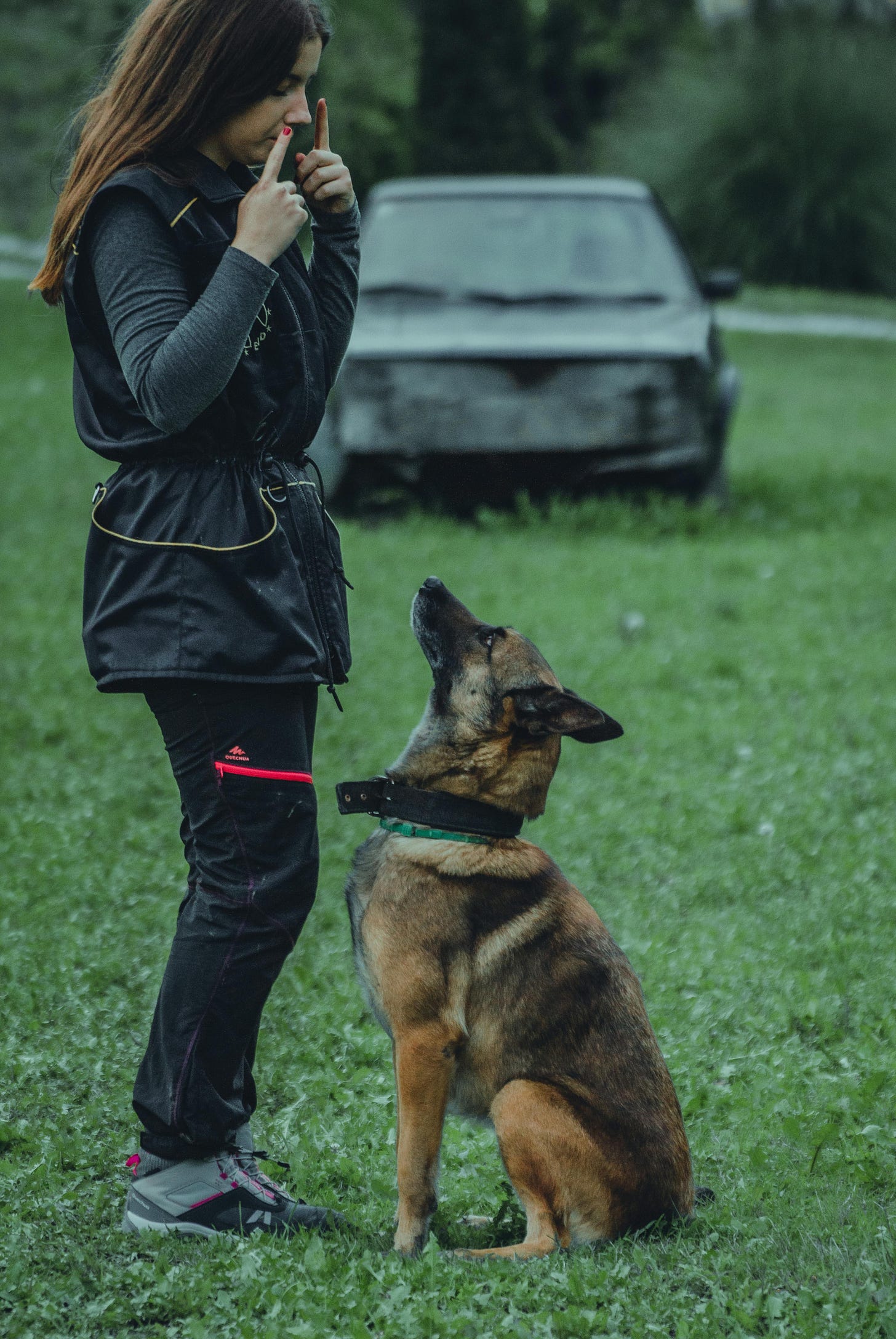Handler focus plays a fundamental role in dog training. It describes a dog's ability to concentrate on its handler and respond to their cues, commands, and gestures. A dog with a strong handler focus tends to learn more efficiently, follow commands reliably, and form a deeper connection with its handler.
Why Is Focus Essential?
Safety
A distracted dog can create dangerous situations for itself and others. For instance, if a dog chases squirrels or livestock, it might injure the animal being pursued or put itself at risk of harm from traffic, fences, or defensive animals. Similarly, a dog that fails to respond to commands could wander into unsafe areas, like busy roads, or approach individuals who may feel threatened. Ensuring a dog consistently focuses on its handler is essential. This focus helps the dog remain calm, attentive, and manageable, even in unpredictable or highly stimulating environments, reducing the likelihood of accidents or harmful behaviour.
Training
Dogs with strong focus are usually much easier to train due to their attentiveness and willingness to work closely with their trainer. These dogs tend to grasp new commands more quickly compared to those with weaker focus, demonstrating an ability to concentrate even in challenging or distracting environments. For example, whether you're teaching basic commands like "sit" or "stay" or moving on to more advanced tasks such as gundog work or scent detection, a dog with solid handler focus is far more likely to succeed. This attentiveness reduces the need for repeated correction and helps streamline the learning process, saving time and reducing stress for both the dog and the handler. In contrast, dogs with low handler focus may require additional effort, patience, and specialised techniques, as their attention is easily diverted. Overall, building and maintaining handler focus is a cornerstone of effective training, laying the groundwork for both foundational skills and advanced disciplines.
Bonding
A dog that pays close attention to its handler shows a deeper bond with its owner. This attentiveness suggests the dog views the handler as a source of direction, comfort, and positive reinforcement. When the dog consistently responds to commands and receives rewards, such as treats, affection, or enthusiastic praise, it begins to associate its owner with safety and satisfaction. These repeated interactions build trust and mutual understanding, forming a foundation of loyalty. Over time, this process strengthens the relationship, creating a meaningful connection that benefits both the dog and the handler. This bond isn’t just about obedience; it reflects a shared sense of respect and reliance that enhances their companionship.
Developing a strong focus requires consistent practice and patience. With the right approach, significant progress can be made. Here are some strategies:
Positive Reinforcement: Reward your dog with treats, praise, or play when it demonstrates good focus or follows your commands. Positive reinforcement encourages your dog to repeat the desired behaviour.
Short Training Sessions: Keep sessions brief, around 10-15 minutes, as dogs can quickly lose concentration. As their focus improves, you can gradually extend the duration.
Minimise Distractions: Begin training in a quiet environment with few distractions. Once your dog improves, you can introduce more challenging settings to build their focus.
Consistency: Use the same commands and cues during each training session. Consistent rewards for positive behaviour help your dog understand what is expected.
Varied Methods: Incorporate a range of training techniques, such as marker training or shaping, to keep your dog engaged and motivated.
Conclusion
Handler focus is an essential component of effective dog training. A dog that actively listens and responds well is not only safer but also easier to train. This attentiveness fosters a stronger connection between the dog and its handler, built on trust and communication. To improve a dog’s focus, several practical strategies can be employed. Positive reinforcement, such as using treats or praise, encourages desired behaviours by rewarding the dog immediately. Keeping training sessions short and focused ensures the dog remains engaged without becoming overwhelmed or bored. It’s also helpful to gradually reduce distractions, starting in quiet environments and slowly introducing more stimulating settings as the dog’s focus improves.
Consistency in commands and expectations ensures the dog understands what is required of them, avoiding confusion. Strengthening a dog’s focus not only enhances training outcomes by making commands clearer and more effective but also deepens the bond between dog and handler, fostering a sense of teamwork and mutual respect.




